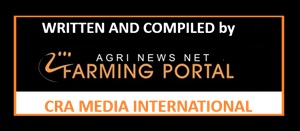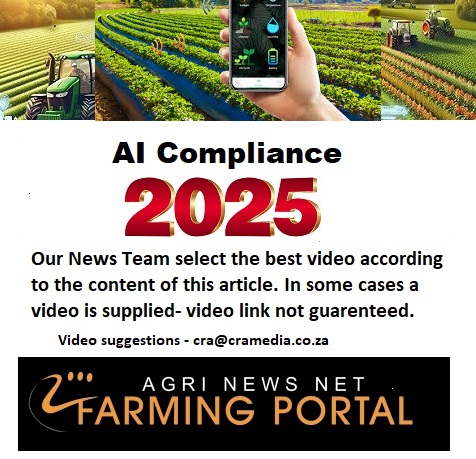South African farmers, the backbone of the nation’s food security, face growing challenges that demand unity and proactive resistance against external interference in their industry. With agriculture contributing significantly to the economy—generating R405 billion in 2024 and supporting over 800,000 jobs—farmers must stand together to safeguard their livelihoods, families, workers, and the health of the nation. The call for solidarity comes amid concerns about government policies and non-farming entities attempting to influence or reshape agricultural practices without sufficient input from those who work the land.
The Strength of South African Agriculture
South Africa’s agricultural sector is a global success story, consistently producing surplus food despite challenges like drought, disease, and policy uncertainty. In the 2024-25 season, the country harvested 15.03 million tonnes of maize, 17% above the previous year, ensuring food security with exports of 428,975 tonnes in the first 13 weeks, primarily to the Far East and Southern Africa. The citrus industry, a major export driver, projects 180 million cartons for 2025, up from 164.1 million in 2024, supported by improved logistics despite record volumes. These achievements underscore the resilience and hard work of South African farmers, who operate without the heavy subsidies common in other countries .Farmers’ dedication ensures South Africa remains food-secure, producing staples like maize, potatoes, and poultry that feed millions. The potato, a vital crop, contributes to global food security as the third-most important food crop after rice and wheat, with South Africa’s efficient production systems adapting to environmental challenges. The poultry industry, worth R59 billion, supports over 100,000 jobs and battles to maintain local production against import pressures, despite avian influenza losses.
The Need for Farmer Unity and Advocacy
Farmers must unite to protect their rights and ensure their voices shape agricultural policy. The government’s Export Assistance Service, launched to counter U.S. tariffs, offers potential support for diversifying markets to the EU, Asia, and Africa, but its success depends on farmer input. The citrus industry’s logistical improvements, driven by Transnet’s equipment upgrades, show what’s possible when stakeholders collaborate, yet farmers must demand similar engagement on trade and land policies.Key actions for farmers include:
- Forming Coalitions: Establish or strengthen farmer associations to negotiate collectively with the government and trade partners, where community-based programs ensure economic benefits.
- Advocating for Inclusion: Demand consultation on policies like the Poultry Master Plan or land reform, ensuring practical farmers’ expertise guides decisions. The lack of dialogue on the AGOA quota mirrors past failures, such as the 1912 exclusion of women from legal practice, highlighting the need for inclusive policy-making.
- Protecting Land and Practices: Resist external pressures, including speculative land investments or policies favoring non-farmers. In Zimbabwe, restricting land sales to “indigenous” buyers was deemed unconstitutional, a cautionary tale for South Africa to uphold equitable land access under Section 25 of the Constitution.
- Promoting Sustainable Practices: Adopt regenerative farming, to enhance soil health and resilience, reducing reliance on government support and ensuring long-term productivity. This aligns with global trends, such as the potato’s genetic resilience, which could inform local breeding programs.
The imposition of a 30% tariff on South African exports to the United States, effective August 7, 2025, under President Donald Trump’s trade policy, is poised to deliver a severe blow to South African farmers, threatening their livelihoods, rural communities, and the nation’s food security. This tariff, part of a broader strategy targeting 69 countries to address perceived trade imbalances, ends the preferential duty-free access provided by the African Growth and Opportunity Act (AGOA), which has supported exports of over 6,700 products. For South Africa’s agricultural sector, a key driver of the economy with R405 billion in output and over 800,000 jobs in 2024, the consequences are profound, particularly for citrus, wine, and other high-value export crops.
The 30% U.S. tariff threatens South African farmers with job losses, reduced competitiveness, and community collapse, particularly in citrus and wine regions. Government inaction and geopolitical missteps have left farmers exposed, despite their critical role in ensuring food security and economic stability. By uniting, advocating for policy inclusion, and diversifying markets, farmers can mitigate the tariff’s impact and protect their industry. The government must prioritize urgent diplomacy and support packages to safeguard agriculture, ensuring that rural communities and the nation’s food supply do not pay the price for diplomatic failures.
We do want one person or organisation to speak on behalf of all the farmers.
South African farmers, as hardworking stewards of food security, must unite to protect their industry from government overreach and non-farming influences. By forming coalitions, demanding policy inclusion, and adopting sustainable practices, they can safeguard their livelihoods and ensure agriculture remains a cornerstone of the economy. The government’s failure to consult on tariffs and master plans risks job losses and food price hikes, but farmers can draw on historical resilience and global lessons to advocate for their rights. Unity is their strength—standing together, they can ensure South Africa remains food-secure and economically vibrant, free from invasive policies that undermine their hard-earned success.

DISCLAIMER
The views and opinions expressed in this program are those of the writers and do not necessarily reflect the views or positions of any entities they represent. The information contained in this website is for general information purposes only. The information is provided by CRA and while we endeavour to keep the information up to date and correct, we make no representations or warranties of any kind, express or implied, about the completeness, accuracy, reliability, suitability or availability with respect to the website or the information, products, services, or related graphics contained on the website for any purpose. Any reliance you place on such information is therefore strictly at your own risk.


















